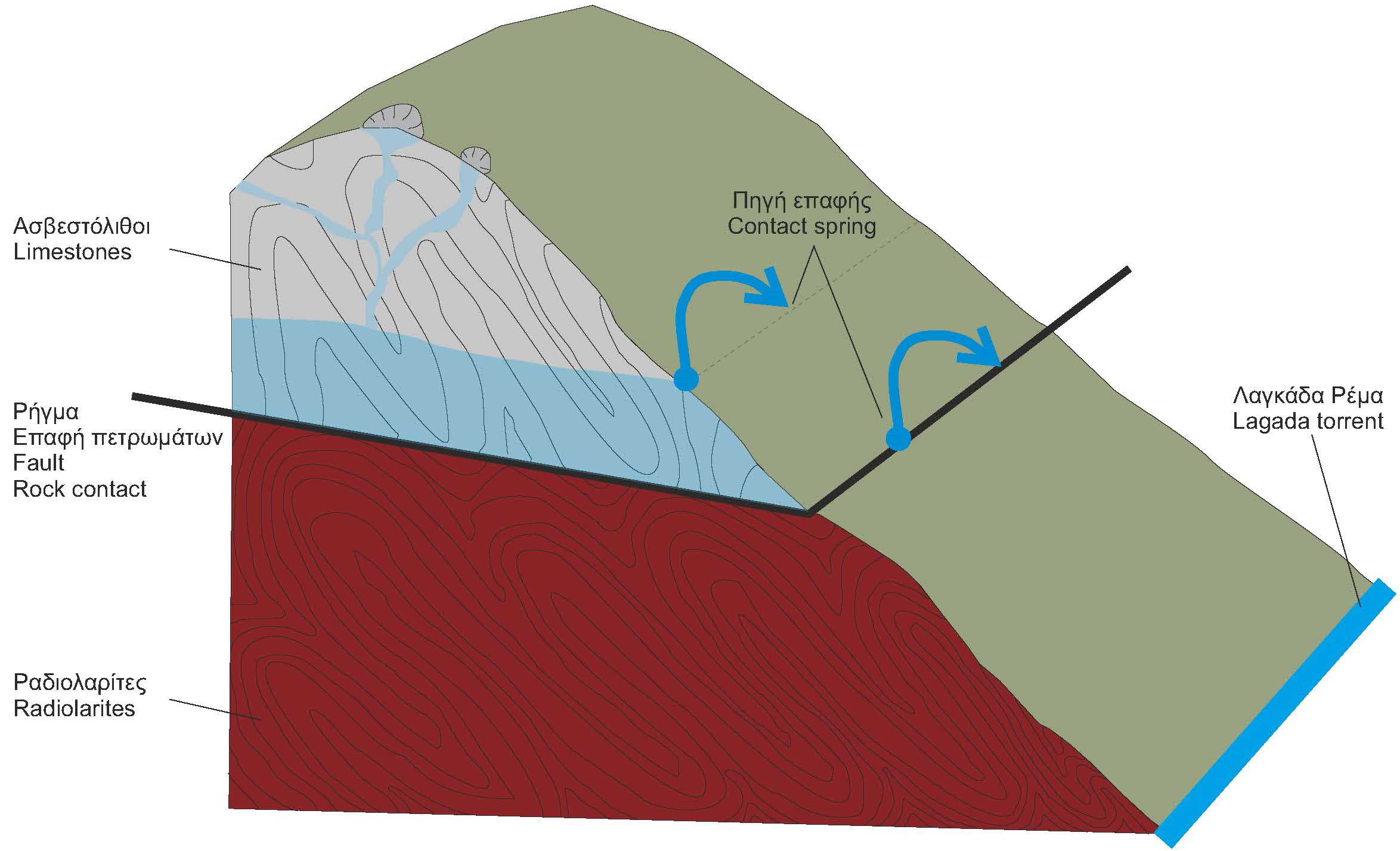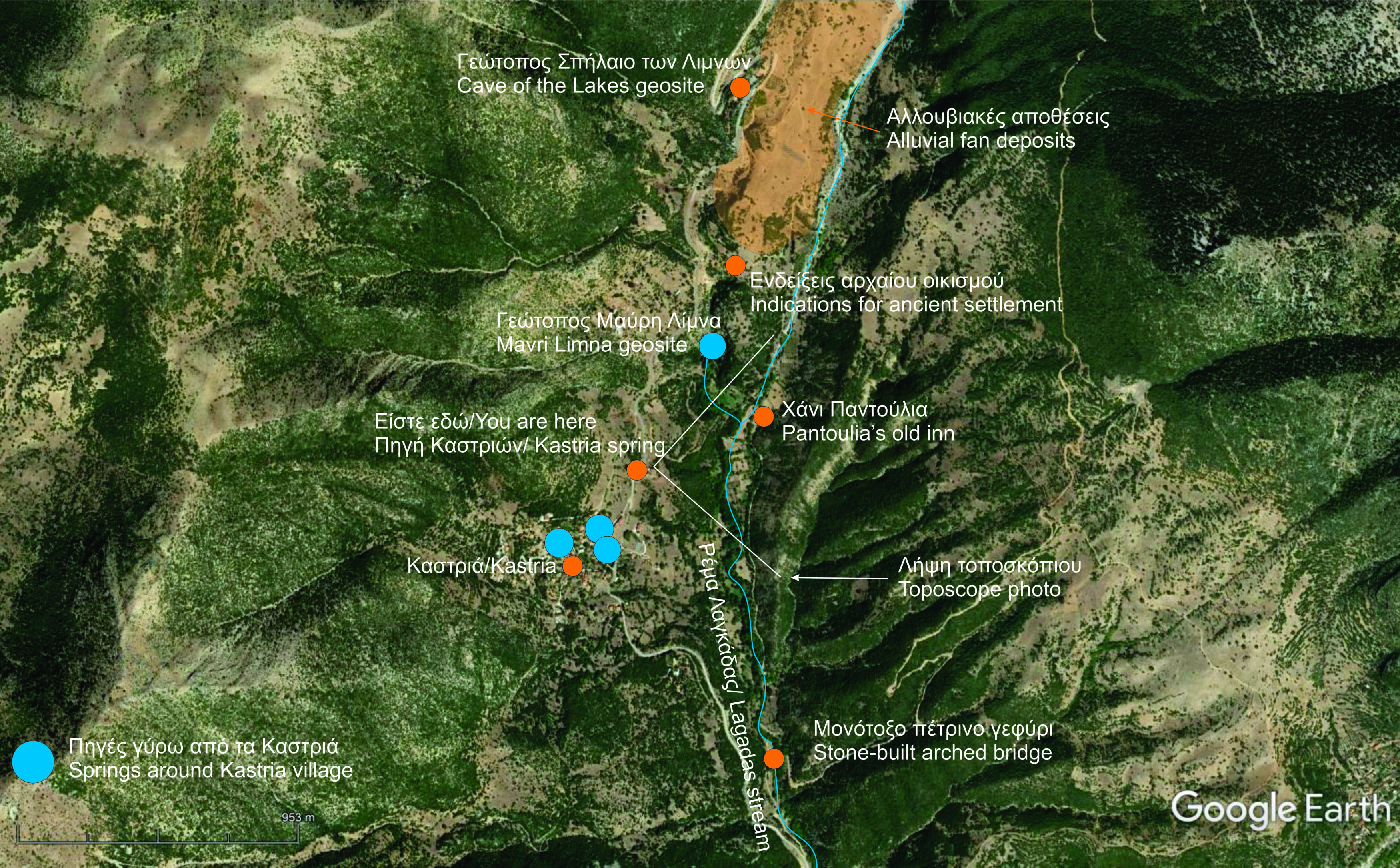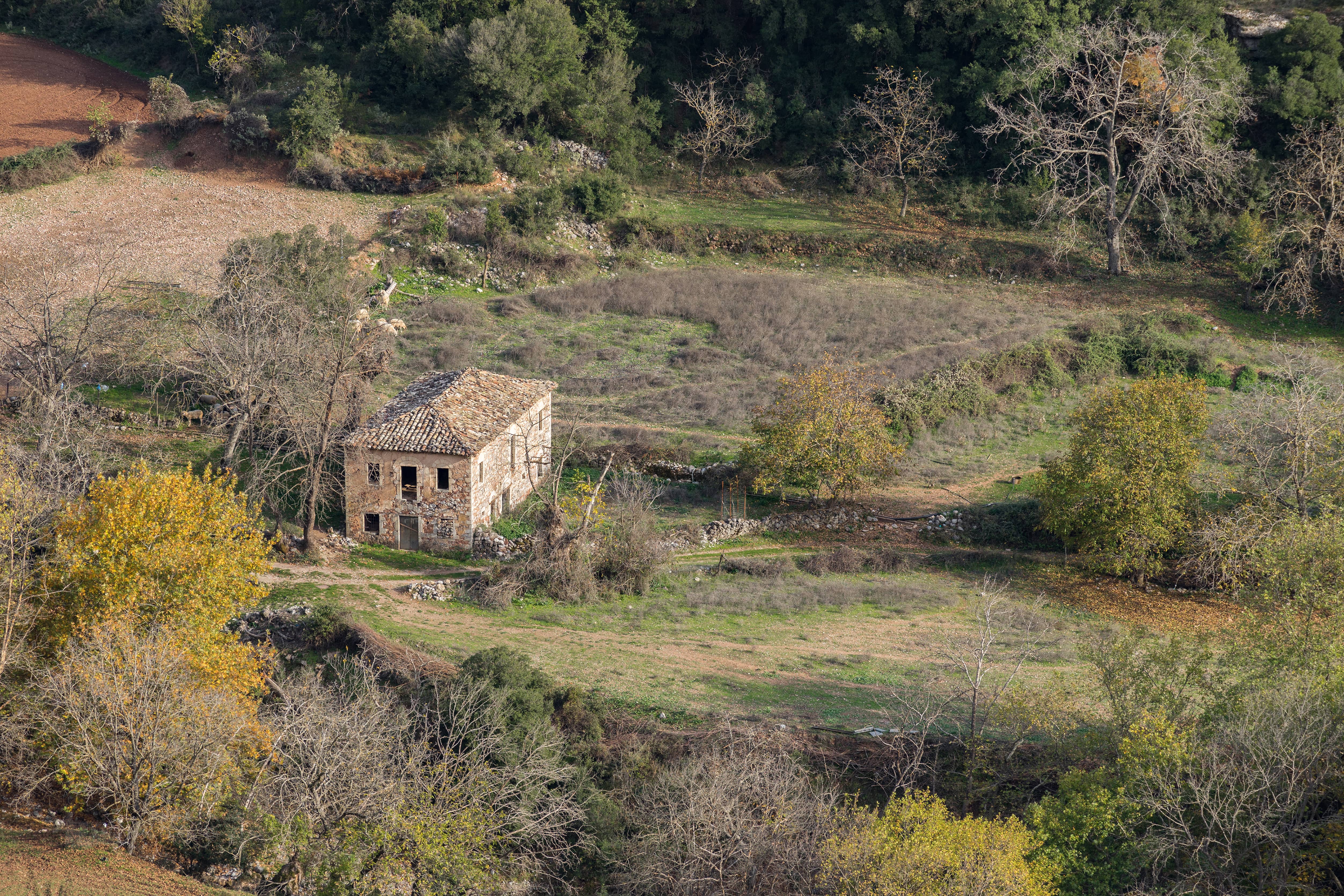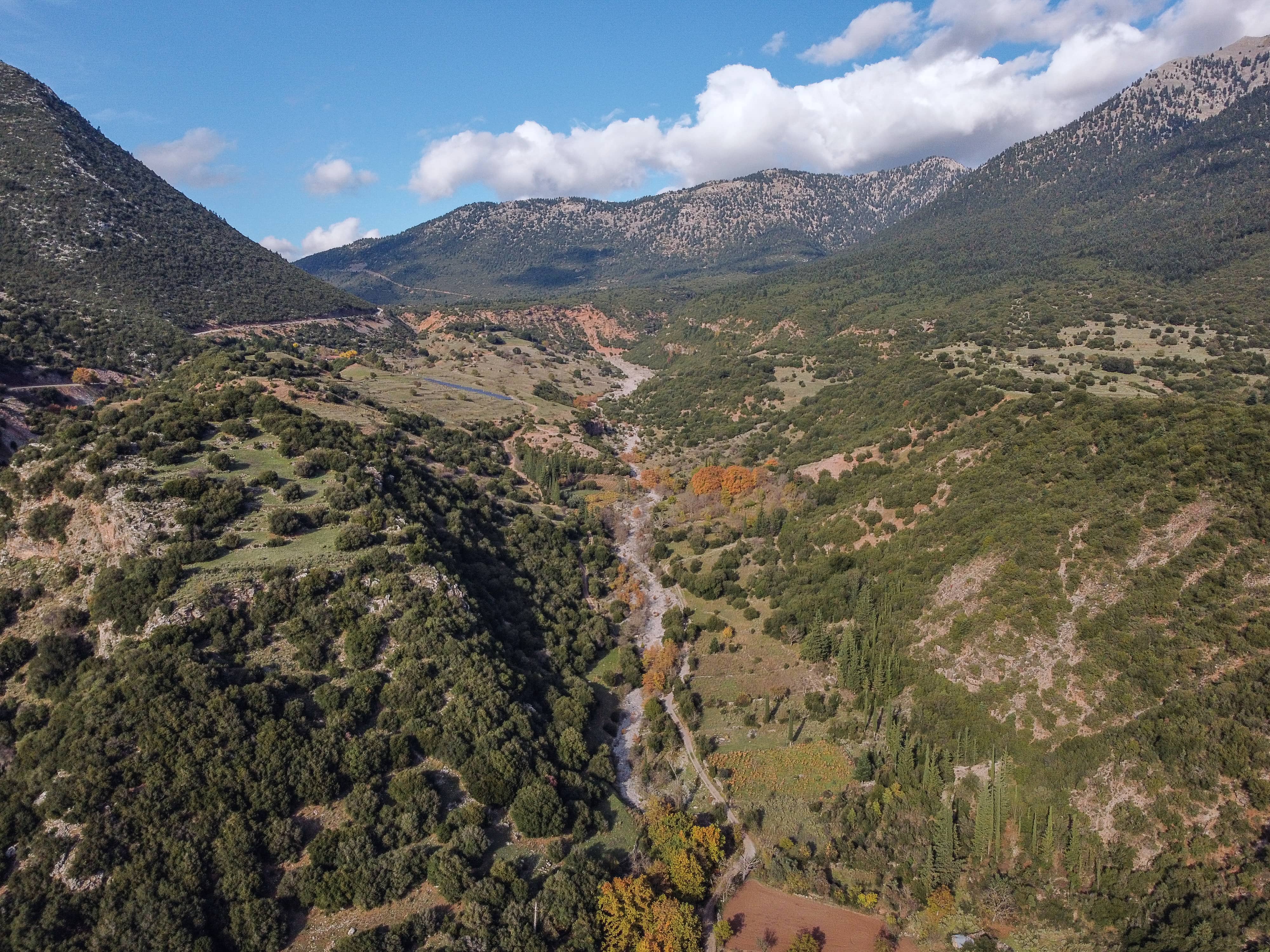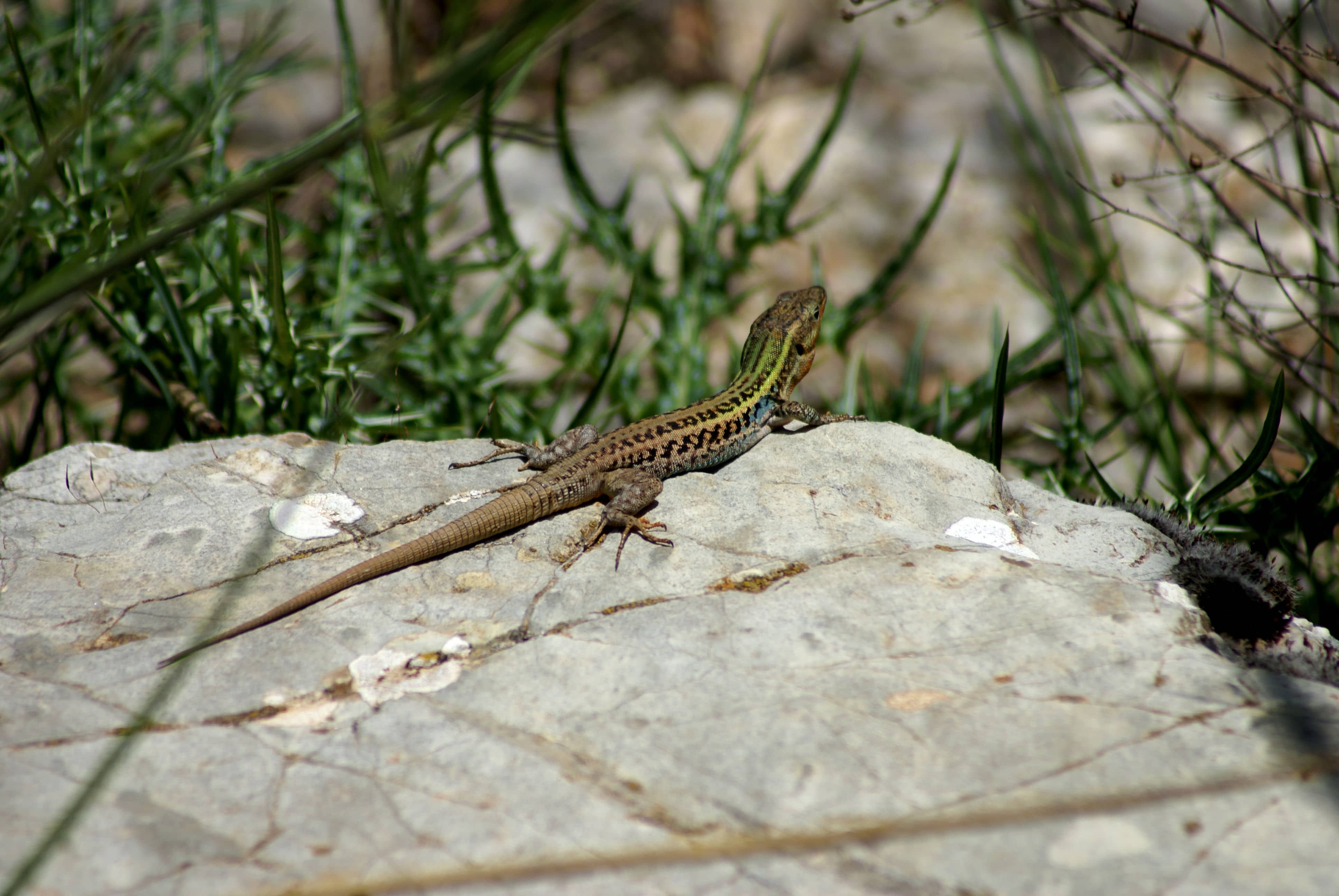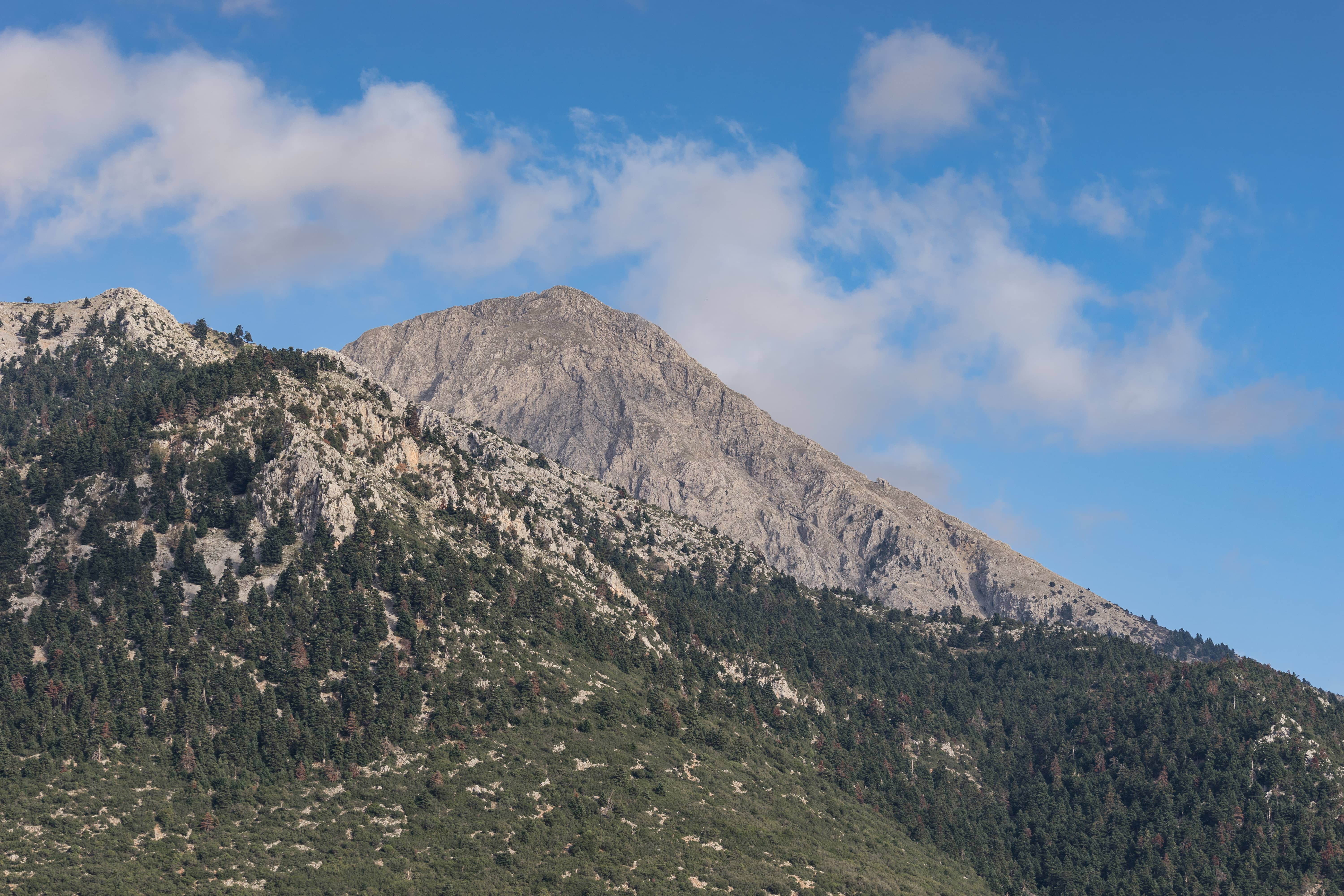STOP…FOR OBSERVATION
Kastria spring is a stone-built faucet with an unlimited view to the western part of Chelmos. The valley that crosses the stream of Lagada, can be seen to the south. Towards the north, glacial and alluvial fan deposits (river deposits) can be seen. Nearby there is a well-maintained old inn (Pantoulias inn), while in the proximity a Byzantine cemetery was found along with skeletons and funeral offerings. Also, 1300m to the south, along Lagadas stream there is an old stone-built arched bridge.
Geodiversity
Kastria spring is a spring in which water moves under the influence of gravity and is formed when an overlying permeable rock (here gray platy limestones) comes into contact with the underlying impermeable one (here radiolarites). Radiolarites are rocks that have been formed by the accumulation of siliceous microorganism shells at the deep-sea bottom, called radiolaria. As the geologic time passes, radiolarian shells get compressed and compacted, forming finally the rock called radiolarites.
Surface water penetrates the limestones, but not the underlying radiolarites. It flows along the contact surface between the two rocks and comes out at the surface through holes, creating contact springs. Around Kastria village there are at least three springs (Vrisoula spring, Mesana faucet and Motsara spring).
Biodiversity
The Geosite is located within the Protected Area “SPILAIO KASTRION” (GR2320009) and the Special Protection Zone of the avifauna “MOUNT HELMOS (AROANIA) – VOURAIKOU GORGE AND KALABRYTON AREA” (GR2320013) of the Natura 2000 network. Clusters of evergreen broad-leaved species cover the majority of the area, with the dominant species being Quercus coccifera and Juniperus oxycedrus and phrygana communities with species such as Sarcopoterium spinosum and Phlomis fruticosa. Important faunal species recorded from this area are the Greek stream frog Rana graeca and the Peloponnesian wall lizard (Podarcis peloponnesiaca), an endemic lizard of Peloponnese.

